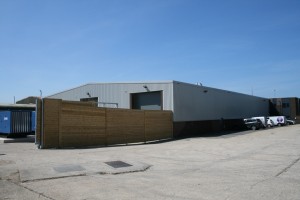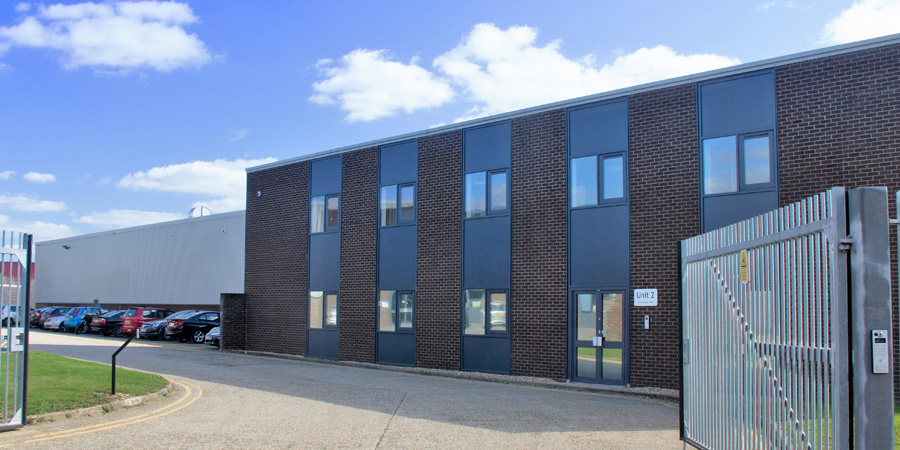
Despite Colo-X closing a couple of transactions with Everest this year we feel its still its a relatively unknown name in the UK colocation market; yet we also believe Everest is a great example of both the quality and scale new entrants are bringing to the market, so adding to the increasing range of options to colocation users in terms of service, locations and price points.
As Colo-X attends numerous customer meetings with colocation providers and also closes a number of transaction every month our knowledge and understanding of the new options remains fresh and up to date and is an invaluable resource for an IT manager with a new data centre requirement. A quick call or meeting is all it usually takes to review your requirements, discuss the options and explain the pricing implications. In the meantime, on with the interview:
Colo-X Questions:
Ed, please tell us a bit about Everest –
- What is the size of your new facility?
Our Reading data centre is a 6.5MVA site with 1,000 racks in capacity across 5 data halls, at an average density of 4kW per rack. - When did it open?
The first customers went live in May 2013, so we’re coming up to the 18 month milestone. - What is the approximate current level of occupancy?
Of our 5 data halls, we have built and fitted out 3 of them, with 2 more due to be completed next year. We have recently passed 60% occupancy, and have approximately 380 racks/1.5MW of IT capacity left in the site. - How many customers are with you?
We don’t give precise figures, but our customer numbers are in the range of 50-100 currently.
Colo-X is tracking some 50 colocation facilities in and around London these days – how is Everest going to differentiate itself in an increasingly crowded and competitive market place?
There are a few key areas that I think we set ourselves apart in the marketplace. Firstly, we are able to offer the “full wrap” of services. We provide connectivity, on site remote hands including server management, and data centre migration. I’ll expand on each of those points in a little more detail.We quite often see retail customers who have a requirement of < 20 racks looking for a simple connectivity solution wrapped into their data centre contract. We can provide this, whilst also partnering with a number of carriers on site if customers want more options. We provide IP transit, layer 2 transport over our VPLS network, and optical wavelengths into key hub sites like Telehouse.
 With our remote hands offering, quite a few of our competitors are approaching data centres from a pure property investment point of view. The background of the team around Everest is managed services and supporting servers – we know how critical it is to have clued up engineers responding quickly. This dovetails into our migration services too. Approximately 250 of the racks in the data centre have been migrated in by our own team; by de-risking this element for the end user it makes our proposition an easy one to say ‘yes’ to.The second key area where I think we differentiate ourselves is our processes aimed at making customer interactions easier. We believe we’ve got the most comprehensive and friendly portals of anyone in the data centre industry. This is the key to making sure customer’s experience of the site is quick and painless – things like arranging access, viewing graphs of your power usage, ordering cross connects, keeping up to date with scheduled maintenance. By making all of these aspects friendly, quick and process driven, it really adds value to the data centre and underlines the reason for outsourcing for our customers.
With our remote hands offering, quite a few of our competitors are approaching data centres from a pure property investment point of view. The background of the team around Everest is managed services and supporting servers – we know how critical it is to have clued up engineers responding quickly. This dovetails into our migration services too. Approximately 250 of the racks in the data centre have been migrated in by our own team; by de-risking this element for the end user it makes our proposition an easy one to say ‘yes’ to.The second key area where I think we differentiate ourselves is our processes aimed at making customer interactions easier. We believe we’ve got the most comprehensive and friendly portals of anyone in the data centre industry. This is the key to making sure customer’s experience of the site is quick and painless – things like arranging access, viewing graphs of your power usage, ordering cross connects, keeping up to date with scheduled maintenance. By making all of these aspects friendly, quick and process driven, it really adds value to the data centre and underlines the reason for outsourcing for our customers.
The sort of pricing available from Everest is extremely competitive – how are you able to offer such low prices and yet still provide the same sort of quality that other more expensive facilities also claim to offer?
When we started building our Reading facility, we were aware that there was a significant pipeline of new supply in the market for data centre space. We took a view that supply was going to outstrip demand for a period of time, and this would depress prices from their levels in the late part the 2000s and early 2010s.We didn’t want to be one of the guys (and I believe there are quite a few in this market) realising that in their rush to build facilities they made decisions based on a market price point that wouldn’t be sustained.Our design goals were to build a very efficient data centre that would hit all the key requirements for a corporate specification data centre. We spent a considerable amount of time selecting the right site with power and connectivity and I believe what we’ve ended up with is something that is both competitive and sustainable. Fundamentally, analysing the build in full has allowed us to be in a very competitive position.
How have you found the market in 2014 and what are your thoughts for the market looking forward into 2015?
In 2014, we’ve found the market to be pretty buoyant. There is quite strong competition and some people are really struggling to shift space – in my view partly because their price points were set 5 years ago at unrealistic levels. We’re finding in the second half of 2014 more retail opportunities starting to pick up and a fairly constant level of demand in the wholesale space.For 2015, our expectation is that people will feel that they are well and truly out of the woods in terms of the recession, and with this will come an increased desire to embark on projects that deliver a long term benefit. This will drive demand from customers whose existing colocation contracts are coming to an end, and moving out of sites like Equinix LD4/LD5. For this profile of client what we’ve seen this year is a trickle turn into a steady flow, and with people saving anywhere from 30% up to as high as 70% on their annual colocation costs.
Which colocation customers do you feel Everest is the best fit for?
Our clients range from having a single ¼ rack to > 100 racks, so quite a wide range of customers feel we are the best fit for them! I’d say the customers we are the best fit for are those who are looking to the data centre for a full service wrap, including remote hands, connectivity and migration.
Ed, many thanks indeed for your help with this informative interview.
